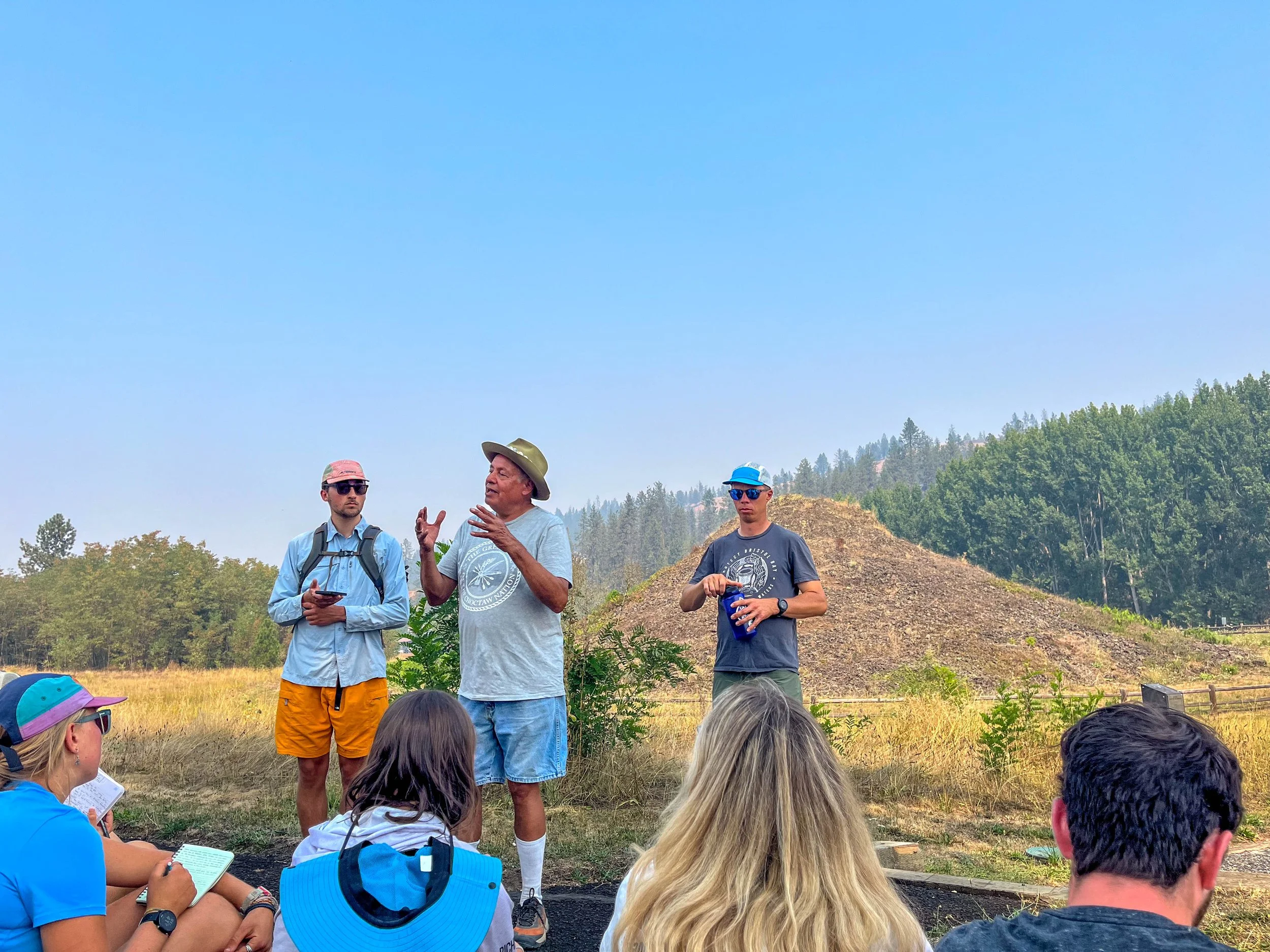Roger Amerman
Enthnogeologist
Stites, ID
September 8, 2024
It was a smokey late Friday afternoon when we pulled into the driveway of the Nez Perce Longhouse in Stites, Idaho. Roger Amerman, renowned Choctaw ethnogeologist, beadwork artist, and close colleague and friend of Whitman College, greeted us right away with cheerful introductions and hugs with former students. A circle formed immediately, drawn to Roger’s contagious excitement as he dived into his life and the surrounding area. Ethnogeology, as he explained, is the study of Native American engagement with the environment- soils, geologic phenomena, and natural resources- over the course of over 16,000 years.
Soon many of us got to work carrying the large poles (lodgepole pine) from Roger’s property down the road to the yard of the Longhouse. With the sun setting, we followed Roger’s instructions to set up the traditional teepees. The teepee entrance always faces East; orientation in the landscape and the cosmos is central to the Nez Perce way of life. Over dinner, he had us all laughing over stories from his Whitman years.
The next day we visited the Heart of the Monster, a geological monument near the town of Kamiah. The large grassy mound marks a central part of the Nez Perce origin story; when Coyote killed the Monster, who had broken laws of the land by eating all the animals, he discarded the parts of its body across the land. Roger also took us to see the lesser known Lungs of the Monster. In the smoky heat, we stood on the hill looking over the ridges of the Lungs as he reflected on his approach to geologic research. He spoke about the importance of collaborating with all the demographics of a given community- elders, government officials, non-official groups, and all the other “cats.” He also spoke about the universal benefit of incorporating Indigenous knowledge into Western science; “We believe we’re the only ones keeping us connected to the land! And if we lose it, our situation as human beings is at best, precarious,” Roger said. His knowledge of the area yielded other benefits- ice cream and a secret swimming spot.
During our jet boat tour through Hell’s Canyon the following day, Roger added his valuable wealth of knowledge and distinct energy. A constant message throughout, occasionally followed by a fistbump, was “petroglyphs don’t lie, baby.” These symbols, as he explained, revealed the exact legacy of the area. The big-horned sheep depicted on the rocks, as opposed to deer and elk, reveal the central animal to the Sahaptin people living in the region thousands of years ago.
Wildfire smoke forced us to depart from Roger a day early. As we stood in the yard of blue flowers saying our goodbyes, he asked us all to name our favorite mythical creature and three reasons why. His was a centaur- fusion of man and animal. Going forward, he encouraged us to not overlook conflicting truths. In his words, “pay attention. Even if each family has a little bit of a different story, you don’t throw any of that data away. You see how you can use that to tell a better story.”
by Alice O’Brien

